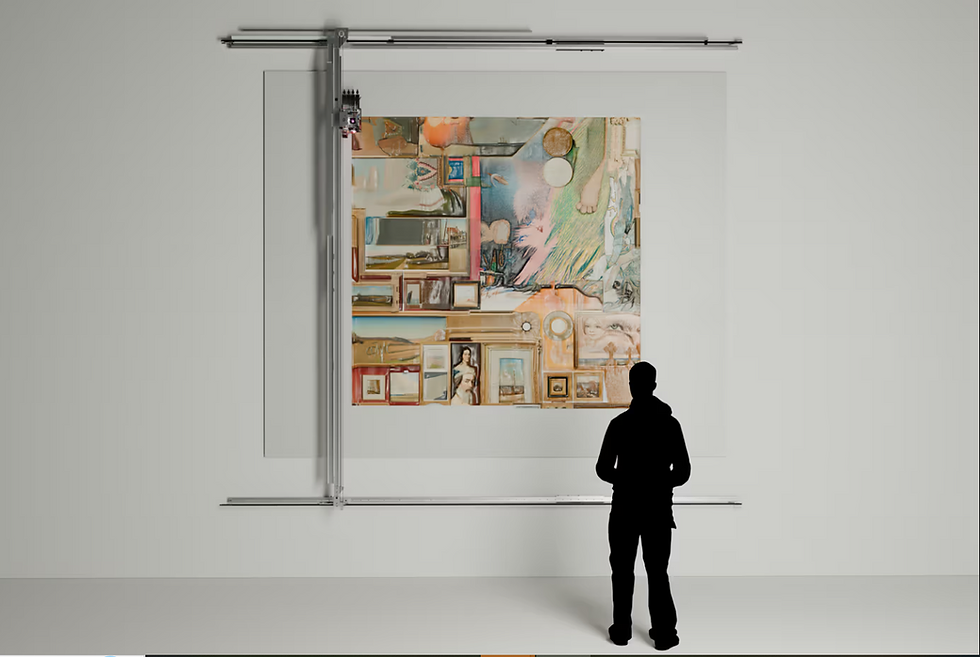Avoiding the Pitfalls: Six Common Mistakes Art Collectors Make—and How to Steer Clear
- Obidike Okafor
- Jul 16
- 3 min read
In the nuanced world of art collecting, the process is often as significant as the acquisition itself. Whether motivated by aesthetic appreciation, investment potential, or cultural enrichment, collectors must ensure that their decisions reflect both their personal values and long-term vision.
Yet the sheer volume of artists, artworks, and ever-shifting market dynamics can make the journey overwhelming. Without careful navigation, even experienced collectors may encounter avoidable missteps. Below, we explore six of the most common pitfalls in art collecting—and offer strategies for building a more thoughtful, resilient collection.

1. Neglecting the Artist’s Narrative and Context
Every artwork carries a narrative—one that extends beyond its visual appeal. A lack of understanding about an artist’s background, influences, and thematic explorations can lead to a superficial purchase that may not stand the test of time.
"We advise collectors to do their homework," says Hollis Taggart, owner of the eponymous New York gallery. "Beyond aesthetics, they should ask: Do I understand the artist's journey? Do I grasp the significance of this piece within their body of work?"
Self-education is key. Engaging directly with artists at gallery openings, reviewing exhibition catalogues, and leveraging online resources such as gallery websites and Art Report Africa provide valuable context. A well-informed collector does not merely buy a painting—they acquire a story, a legacy, and a deeper connection to the artwork.

2. Chasing Trends Instead of Trusting Instinct
The art market is increasingly shaped by viral moments, auction headlines, and algorithm-driven hype. But aligning one’s collecting decisions with transient trends can lead to superficial or regrettable purchases.
“The best work for one collector is not necessarily the best for another,” notes art advisor Nazy Nazhand. True collecting begins with personal resonance.
Collectors are encouraged to cultivate their own visual literacy—by frequenting galleries, exploring underrepresented geographies, and deepening their understanding of both historical and contemporary art movements. For major acquisitions, working with an experienced advisor can help guide selections that marry aesthetic vision with financial foresight.
“Our goal is to help clients build legacy collections,” adds Nazhand, “not follow the noise, but invest in enduring value.”

3. Overlooking the Logistics of Display and Preservation
Art is meant to be lived with—but even passionate collectors can underestimate the practicalities of displaying and caring for their acquisitions. Scale, medium, and environmental conditions all matter.
“I once bought a massive Kylie Manning painting that doesn’t fit any wall in my apartment,” laughs collector Antonio Valverde. “But for me, collecting is also a dream for the future.”
Still, strategic foresight is essential. Fragile sculptures may be unsuitable for high-traffic areas. Unframed canvases, ceramics, and works on paper often require climate control or framing to prevent deterioration. Reputable galleries and dealers can help collectors anticipate these needs—whether through framing solutions or protective installation methods tailored to domestic settings.

4. Ignoring Provenance and Condition Reports
In a globalized art market, transparency around an artwork’s history is non-negotiable. Provenance not only verifies authenticity but also speaks to ethical ownership and long-term value.
“Provenance is particularly critical for works made before 1945,” advise Charly and Hanna Bailly of Bailly Gallery. “Collectors should always request documentation confirming the chain of ownership and authenticity.”
Condition reports are equally important, especially when purchasing remotely or at auction. The rise of online marketplaces has made long-distance acquisitions commonplace—but without physical inspection or expert evaluation, collectors risk acquiring compromised works. Whenever possible, viewing the piece in person remains best practice.
5. Making Impulsive Acquisitions
Art fairs, auctions, and gallery openings often create high-pressure environments designed to provoke urgency. While some opportunities are genuinely time-sensitive, rushing into a purchase can lead to regret.
Seasoned collectors know that patience is a virtue. They trust their instincts, take time to reflect, and seek expert counsel when needed. Over time, these habits foster the confidence to make informed decisions—even in high-stakes environments.

Art collecting is not a race for the most sought-after names or the trendiest acquisitions. It is a long-term commitment to curiosity, discernment, and emotional connection. The art world is a dynamic ecosystem where patience, ongoing education, and intuitive decision-making are invaluable.
Missteps are part of the journey, but so are the insights they offer. By approaching each acquisition with thoughtfulness, considering the artist’s narrative, resisting the pull of fleeting trends, anticipating practical considerations, and verifying both provenance and condition, collectors position themselves to build collections of lasting resonance.
In the end, the most impactful collections are forged at the intersection of passion and prudence, where every work acquired reflects both personal meaning and strategic intent.













Comments